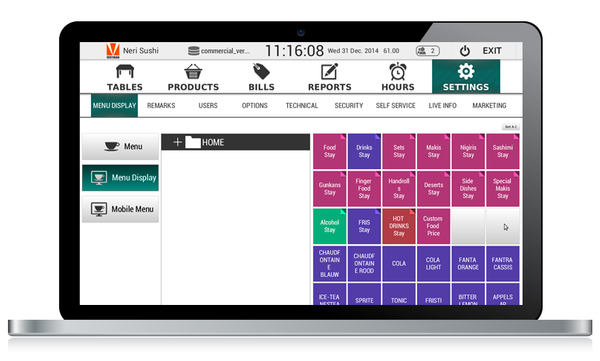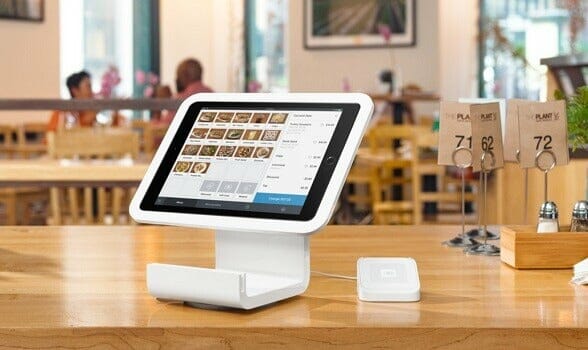Which is better—cloud or local? Restaurant POS Software deployment options explained
Wiki Article
Just How POS System Works: A Comprehensive Overview for Company Owners
A POS system acts as an important device for contemporary organizations, integrating different parts to streamline operations. It incorporates equipment like barcode scanners and software application available for sale monitoring. This system not just refines transactions but also manages stock and evaluates client actions. Recognizing its functionality can considerably affect a service's performance and decision-making. What are the key elements that contribute to this efficiency? Checking out these components uses useful insights.Understanding the Parts of a POS System
A Point of Sale (POS) system is composed of several essential elements that function with each other to promote purchases and take care of service operations. At its core, the hardware includes tools such as a sales register, barcode scanner, invoice printer, and repayment incurable, all necessary for processing sales (Restaurant POS Software). The software application component takes care of inventory, sales monitoring, and consumer information, giving important understandings for service decisions.Additionally, data sources store transaction documents and client information, making sure information integrity and safety. Network connection enables real-time updates and access to cloud-based solutions, boosting operational efficiency. Individual user interfaces, designed for simplicity of usage, permit team to navigate the system swiftly, minimizing training time. Together, these elements produce a natural system that streamlines the sales procedure, boosts customer solution, and help in effective administration of organization sources. Understanding these parts is crucial for entrepreneur seeking to optimize their POS systemsJust How Sales Transactions Are Processed
When a customer decides to make an acquisition, the sales transaction starts a collection of methodical actions within the POS system. The cashier inputs the items being acquired, which are checked via a barcode reader or manually entered. This action retrieves product details, consisting of rates and relevant tax obligations, from the system's database.Next, the client is provided with the complete quantity due. The POS system then processes the repayment, whether through cash, bank card, or mobile settlement approaches. For electronic payments, the POS securely communicates with settlement cpus to accredit and confirm the transaction.Once the settlement is validated, the system creates an invoice, which can be printed or sent digitally. This receipt works as evidence of acquisition for the client. The deal data is recorded in the system, making certain precise sales records and financial monitoring for the company.Inventory Management and Monitoring
Effective supply administration and tracking are important parts of a POS system, as they ensure that services preserve optimal supply levels and decrease inconsistencies. A robust POS system permits real-time stock updates, reflecting sales and returns immediately. This enables local business owner to keep track of supply degrees properly, guaranteeing that preferred items are readily available while protecting against overstocking of less popular products.Additionally, progressed POS systems offer functions such as computerized stock informs and reorder recommendations, enhancing the procurement procedure. Barcoding and RFID modern technology enhance precision in tracking supply motion, minimizing human error. Considerable reporting devices supply insights into stock turnover rates, helping companies make notified decisions about purchasing and product offerings. Ultimately, efficient inventory management through a POS system not only improves operational effectiveness however likewise improves client satisfaction by you can try here guaranteeing item accessibility.
Analyzing Consumer Information and Insights
Client information analysis works as a powerful device for companies utilizing a POS system. By accumulating and taking a look at deal data, services can discover valuable understandings regarding customer actions and preferences. This analysis allows them to identify acquiring fads, peak shopping times, and prominent items, therefore notifying inventory choices and marketing strategies.Additionally, companies can sector their consumer base, allowing for individualized marketing initiatives that accommodate details demographics or buying practices. Understanding client commitment patterns also assists in creating targeted promotions and rewards programs.The information obtained from a POS system can additionally expose understandings into client responses, allowing businesses to make enlightened decisions relating to item offerings and solution improvements. Ultimately, leveraging customer information properly can boost the overall shopping experience, foster customer complete satisfaction, and drive earnings growth.
Benefits of Executing a POS System
Executing a POS system offers numerous advantages that can substantially improve company procedures. To start with, it simplifies deal procedures, minimizing wait times and enhancing customer satisfaction. By automating sales procedures, services can decrease human mistake and guarantee precise record-keeping. In addition, a POS system offers beneficial data analytics, allowing proprietors to track sales fads and inventory levels in real-time. This understanding sustains informed decision-making, assisting to maximize stock administration and advertising and marketing strategies.Moreover, many POS systems integrate with various other business tools, such as audit software application, streamlining financial administration. Boosted worker monitoring functions, such as tracking hours and efficiency, additional add to functional efficiency.Lastly, the implementation of a POS system can result in increased revenue via enhanced customer experiences and critical insights, inevitably fostering service growth and sustainability.
Often Asked Inquiries
What Types of Organizations Can Benefit From a POS System?

Just how much Does a POS System Commonly Expense?
The cost of a POS system commonly varies from a few hundred to a number of thousand bucks, depending upon attributes, hardware, and software program - Restaurant POS Software. Services should take into consideration ongoing fees for upkeep, support, and deal handling when budgeting
Can I Integrate a POS System With Existing Software?
Incorporating a POS system with existing software program is often possible. Numerous systems supply APIs or built-in compatibility functions, permitting organizations to simplify procedures and improve performance by linking different software applications efficiently.What Training Is Required for Team to Make Use Of a POS System?
Educating for team to make use of a POS system commonly consists of understanding software functionalities, processing transactions, managing supply, and taking care of customer communications - Restaurant POS Software. Practical demos and hands-on practice improve efficiency and confidence in operation the system successfullyWhat Occurs if the Net Decreases While Utilizing a POS System?
visit this site right here If the web goes down throughout POS system use, purchases may be disrupted. Lots of systems use offline capabilities, allowing fundamental operations to continue, but complete performance, including real-time inventory updates, will be limited.Report this wiki page